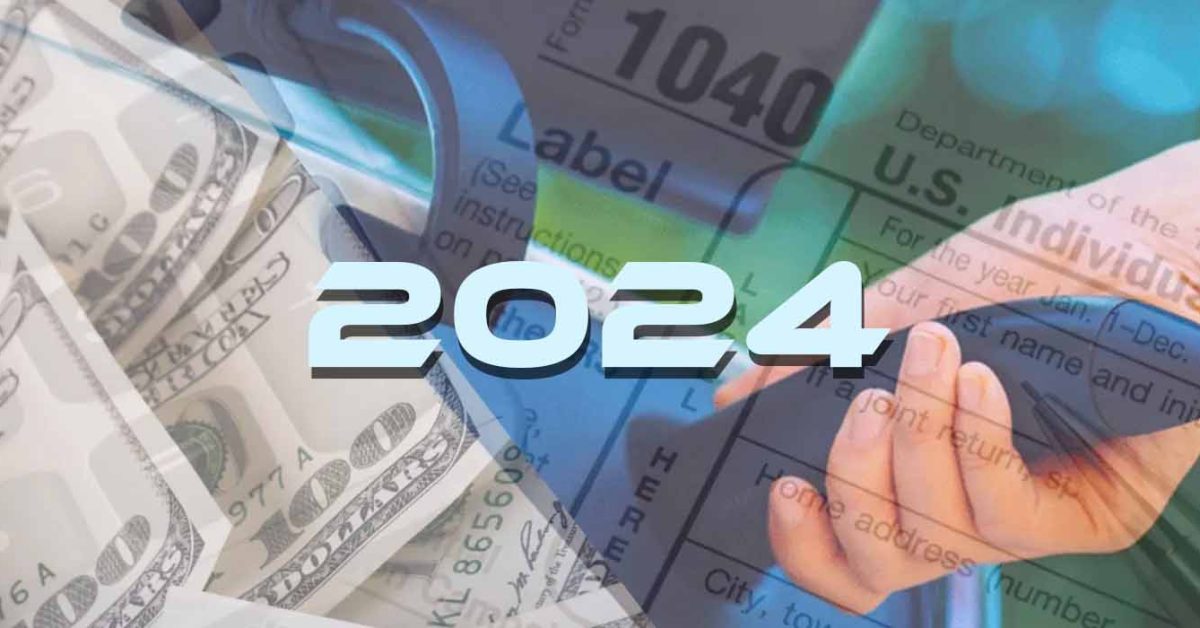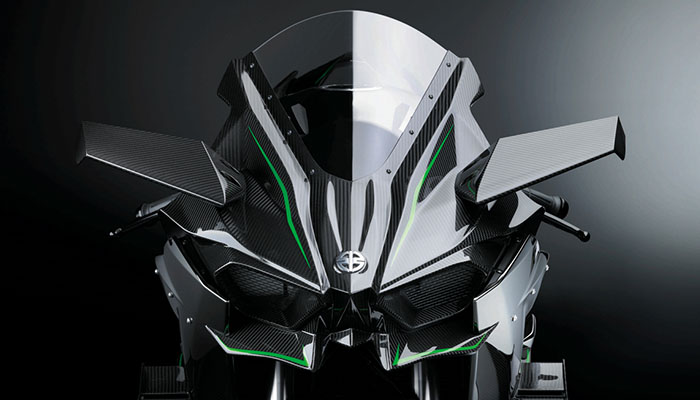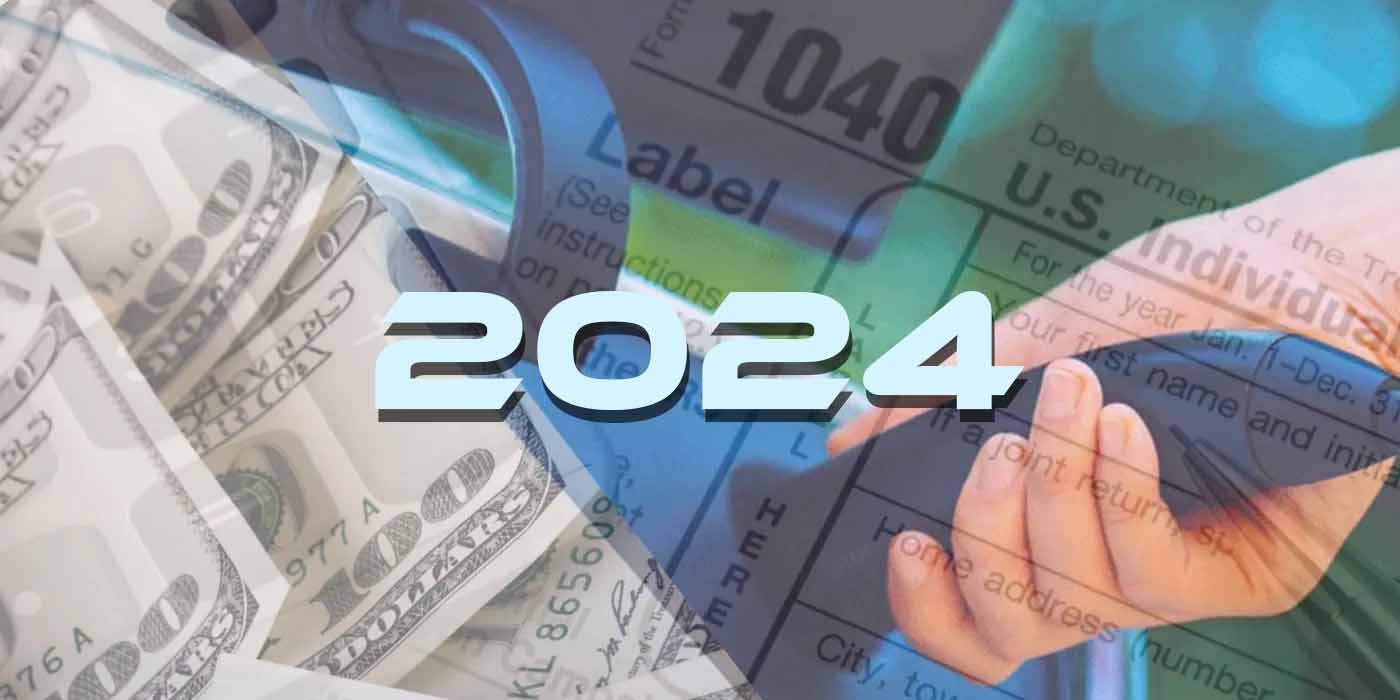
Karena penjualan kendaraan listrik terus tumbuh pada tahun 2024, banyak pelanggan baru dan calon pelanggan memiliki pertanyaan tentang kualifikasi untuk mendapatkan kredit pajak federal untuk kendaraan listrik. Apakah kendaraan Anda memenuhi syarat atau tidak adalah pertanyaan sederhana ya atau tidak, tetapi jumlah yang mungkin Anda dapatkan berbeda-beda di setiap rumah tangga karena sejumlah faktor berbeda. Untungnya, kami telah mengumpulkan semua yang perlu Anda ketahui tentang kredit pajak untuk kendaraan listrik baru atau lama Anda di satu tempat.
Bagaimana cara kerja kredit pajak federal untuk kendaraan listrik saya?
Idenya secara teori cukup sederhana, menurut IRS – “Anda mungkin memenuhi syarat untuk mendapatkan kredit hingga $7.500 berdasarkan Kode Pendapatan Internal Bagian 30D jika Anda membeli kendaraan listrik sel bahan bakar (FCV) plug-in baru yang memenuhi syarat. Undang-undang Pengurangan Inflasi tahun 2022 diubah, tetapi jangka waktu kredit ini diperpanjang untuk kendaraan yang dibeli antara tahun 2023 hingga 2032.
Meskipun demikian, Anda tidak bisa begitu saja membeli kendaraan listrik dan berharap Paman Sam akan memotong pajak Anda sebesar $7.500 pada bulan April. Pada kenyataannya, jumlah yang Anda berhak dapatkan didasarkan pada pajak penghasilan Anda serta beberapa spesifikasi kendaraan listrik yang Anda beli, termasuk tempat pembuatannya. Lebih lanjut tentang itu di bawah.
Pertama, mari kita luangkan waktu sejenak untuk benar-benar memahami cara kerja kredit pajak Federal EV saat ini.
Berapa kredit pajak federal?
Pertama dan terpenting, penting untuk memahami tiga kata kecil yang dilontarkan pemerintah sebelum pemberian kredit sebesar $7.500 – “mungkin” dan “sampai”. Misalnya, Anda mungkin memenuhi syarat untuk mendapatkan kredit pajak federal hingga $7.500 untuk kendaraan listrik Anda. Sekilas, kredit ini mungkin terdengar seperti tarif tetap yang sederhana, namun sayangnya tidak demikian.
Misalnya, jika Anda membeli Tesla Model 3 dan terhutang, katakanlah, pajak penghasilan sebesar $3.500 untuk tahun tersebut, maka itulah kredit pajak federal yang akan Anda terima. Jika Anda berhutang pajak pendapatan federal sebesar $10.000, maka Anda memenuhi syarat untuk mendapatkan kredit penuh sebesar $7.500.
Penting untuk diperhatikan bahwa bagian yang belum terpakai dari $7.500 tidak tersedia sebagai pengembalian dana atau kredit untuk pajak tahun depan. Kekecewaan.
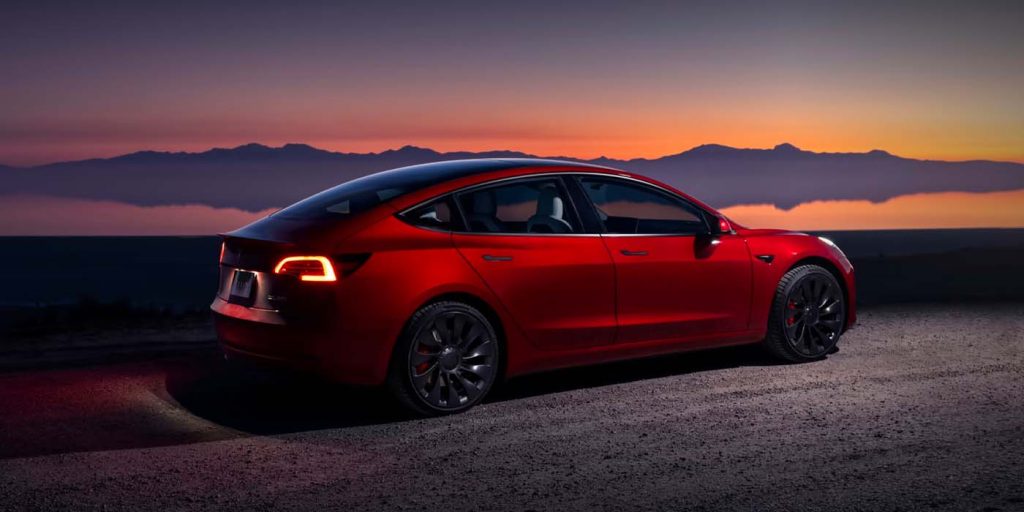
Kredit Pajak Federal berdasarkan Undang-Undang Pengurangan Inflasi
Ketentuan berikut diperkenalkan oleh Pemerintahan Biden pada musim panas 2022 dan mulai berlaku pada 1 Januari 2023:
- Kredit pajak federal untuk kendaraan listrik akan tetap sebesar $7.500
- Batas waktu untuk lolos diperpanjang satu dekade dari Januari 2023 hingga Desember 2032
- Batasan kredit pajak untuk pembuat mobil setelah mereka mencapai 200,000 kendaraan listrik yang terjual dihilangkan, membuat GM, Tesla, dan Toyota sekali lagi memenuhi syarat
- Bahasa dalam RUU tersebut menunjukkan bahwa kredit pajak dapat diterapkan di tempat penjualan, bukan di pajak pada akhir tahun fiskal.
- Itu berarti Anda bisa mendapatkan kredit Anda di muka di dealer, tetapi persyaratan ini mungkin baru berlaku pada tahun 2024
- Untuk mendapatkan kredit pajak penuh, EV harus dirakit di Amerika Utara dan…
- Dua bagian biner memisahkan kredit penuh sebesar $7.500 yang berarti kendaraan tersebut memenuhi syarat untuk setiap bagian kredit atau tidak
- Kredit baru sebesar $3.750 didasarkan pada kendaraan yang memiliki setidaknya 50% mineral penting baterai dari Amerika Utara atau negara-negara dengan perjanjian perdagangan bebas dengan Amerika Serikat. Ini adalah daftar negara-negara dengan perjanjian perdagangan bebas dengan Amerika.
- Kredit baru senilai $3,750 lainnya didasarkan pada setidaknya 50% komponen baterai kendaraan yang berasal dari Amerika Serikat atau negara-negara dengan perjanjian perdagangan bebas dengan AS.
Catatan – persyaratan baterai ini telah diperbarui mulai Mei 2024. Lebih lanjut di bawah.
- Kebutuhan mineral kritis sebesar 50% meningkat menjadi 60% pada tahun 2025, 70% pada tahun 2026, dan 80% mulai tahun 2027 dan seterusnya.
- Kebutuhan komponen baterai sebesar 60% kini tetap sama hingga tahun 2025, kemudian meningkat menjadi 70% pada tahun 2026, 80% pada tahun 2027, 90% pada tahun 2028, dan 100% mulai tahun 2029 dan seterusnya.
- Mulai tahun 2025, kendaraan apa pun dengan mineral baterai atau komponen dari entitas asing yang bersangkutan tidak termasuk dalam kredit pajak
- Kendaraan listrik yang memenuhi syarat juga harus memiliki ukuran baterai minimal 7 kWh dan bobot kotor kendaraan kurang dari 14.000 pon
- Kredit pajak federal baru sebesar $4,000 untuk kendaraan listrik bekas dengan harga di bawah $25k
- Tunduk pada persyaratan lain seperti pendapatan tahunan yang lebih rendah (lihat di bawah)
- Kredit yang direvisi berlaku untuk kendaraan listrik baterai dengan MSRP di bawah $55.000
- Juga termasuk van, SUV, dan truk tanpa emisi dengan MSRP hingga $80.000
- Kredit baru juga diperluas ke pelanggan armada komersial
- Termasuk kualifikasi dan batasan terpisah
- Kredit pajak kendaraan listrik federal akan tersedia bagi individu yang melaporkan pendapatan kotor yang disesuaikan sebesar $150,000 atau kurang, $225,000 untuk kepala rumah tangga, atau $300,000 untuk pelapor bersama
Kredit baru ini juga akan terus berlaku untuk Kendaraan Listrik Hibrida Plug-in (PHEV) selama kendaraan tersebut memenuhi persyaratan yang diuraikan di atas.
Perubahan kredit pajak kendaraan listrik bekas
Kendaraan listrik bekas juga mendapat revisi ketentuan yang kini menawarkan kredit sebesar 30% persen dari harga jual (hingga $4.000). Hal ini akan membantu konsumen seperti Anda mendapatkan kembali uang receh di kantong Anda pada akhir tahun fiskal. Selama Anda mematuhi persyaratan yang ditetapkan oleh IRS.
Untuk memenuhi syarat sebagai pelanggan, Anda harus:
- Jadilah perseorangan yang membeli kendaraan untuk digunakan dan bukan untuk dijual kembali
- Bukan menjadi pemilik aslinya
- Tidak dapat diklaim sebagai tanggungan SPT orang lain
- Belum lagi mengklaim kredit kendaraan bekas bersih dalam tiga tahun sebelum tanggal pembelian EV
- Pendapatan kotor yang disesuaikan dan dimodifikasi tidak boleh melebihi $75rb
- untuk individu, $112,500 untuk kepala rumah tangga, dan $150rb untuk pengembalian bersama
Agar EV bekas memenuhi syarat untuk kredit pajak federal, EV tersebut harus:
- Memiliki harga jual $25.000 atau kurang
- Miliki tahun model setidaknya dua tahun lebih awal dari tahun kalender saat Anda membelinya
- Misalnya, kendaraan yang dibeli pada tahun 2023 memerlukan model tahun 2021 atau lebih tua
- Belum ditransfer setelah 16 Agustus 2022 ke pembeli yang memenuhi syarat
- Memiliki peringkat bobot kotor kendaraan kurang dari 14.000 pon
- Menjadi kendaraan FCV atau EV plug-in yang memenuhi syarat dengan kapasitas baterai minimal 7 kilowatt-jam (kWh)
- Digunakan terutama di Amerika Serikat
- Anda membeli kendaraan dari dealer
- Untuk kendaraan listrik bekas yang memenuhi syarat, dealer melaporkan informasi yang diperlukan kepada Anda pada saat penjualan dan ke IRS
Pembeli harus perorangan (bukan bisnis) agar memenuhi syarat untuk mendapatkan kredit bekas - Kendaraan bekas hanya memenuhi syarat kredit pajak satu kali seumur hidupnya
The IRS’ latest electric vehicle tax credit guidance (May 2024)
In May 2024, the IRS shared its final rules for the federal tax credit program. The original rules required qualifying vehicles to be assembled in North America alongside gradually higher percentages of battery materials and components to be produced on the continent and in countries with free trade agreements with the US.
Following months of difficulties amongst automakers trying to become compliant to qualify, the US Treasury Department and IRS have relaxed some of those parameters, including the sourcing of graphite, electrolyte salts, binders, and additives… at least until 2027.
This latest news follows an October 2023 update that pertained to the transferring of credits. Per the IRS:
The Internal Revenue Service issued proposed regulations, Revenue Procedure 2023-33 (PDF) and frequently asked questions today for the transfer of new and previously owned clean vehicle credits from the taxpayer to an eligible entity for vehicles placed in service after Dec. 31, 2023.
This “transfer” is essentially the ability of a new EV buyer to give the tax credit to the dealer selling them their shiny new EV. In exchange, the dealer can give the equivalent “in cash or in the form of a partial payment or down payment.”
However, all the same eligibility criteria still apply even with a transfer, including the buyer having a federal tax burden.
The buyer must give the dealer all their tax information, which will then be submitted to the IRS. The dealer is not required to verify the information, and therefore, the disclosure falls on the buyer. All the other previous vehicle requirements, like MSRP limits, and for the buyers, like income limit requirements, apply here.
The only requirement that this update allows you to avoid is your tax burden. If, for some reason, you can afford to buy a new car and yet you happen to have a tax burden smaller than the full amount of tax credit you are eligible for, the IRS says that it won’t “recapture” the difference.
Vehicles that qualify for federal tax credits (May 2024)
NOTE: Not every version of the models listed below will necessarily qualify. Please check with your local dealer/seller to determine the eligibility of your specific EV.
Battery Electric Vehicles (BEVs)
| Make and Model | MSRP Limit | Tax Credit Amount |
| ACURA | ||
| ZDX (2024) | $80,000 | Up to $7,500 |
| CADILLAC (GM) | ||
| LYRIQ (2024) | $80,000 | Up to $7,500 |
| CHEVROLET (GM) | ||
| Blazer EV (2024) | $80,000 | Up to $7,500 |
| Bolt EUV (2022-2023) | $55,000 | Up to $7,500 |
| Bolt EV (2022-2023) | $55,000 | Up to $7,500 |
| Equinox EV (2024) | $80,000 | Up to $7,500 |
| FORD | ||
| F-150 Lightning Standard Battery (2022-2024) | $80,000 | Up to $7,500 |
| F-150 Lightning Extended Battery (2022-2024) | $80,000 | Up to $7,500 |
| HONDA | ||
| Prologue (2024) | $80,000 | Up to $7,500 |
| NISSAN | ||
| LEAF S (2024) | $55,000 | Up to $3,750 |
| LEAF SV Plus (2024) | $55,000 | Up to $3,750 |
| RIVIAN | ||
| R1T Dual Motor Large Pack (2023-2024) | $80,000 | Up to $3,750 |
| R1T Dual Motor Max Pack (2023–2024) | $80,000 | Up to $3,750 |
| R1T Quad Motor Large Pack (2022-2024) | $80,000 | Up to $3,750 |
| R1S Dual Motor Large Pack (2023-2024) | $80,000 | Up to $3,750 |
| R1S Quad Motor Large Pack (2022-2024) | $80,000 | Up to $3,750 |
| TESLA | ||
| Model 3 Performance (2023-2024) | $55,000 | Up to $7,500 |
| Model X Long Range (2023-2024) | $80,000 | Up to $7,500 |
| Model Y Rear Wheel Drive (2024) | $80,000 | Up to $7,500 |
| Model Y Rear Wheel Drive Long Range (2024) | $80,000 | Up to $7,500 |
| Model Y All Wheel Drive (2023-2024) | $80,000 | Up to $7,500 |
| Model Y Performance (2023-2024) | $80,000 | Up to $7,500 |
| VOLKSWAGEN | ||
| ID.4 Standard (2023-2024) | $80,000 | Up to $7,500 |
| ID.4 S (2023-2024) | $80,000 | Up to $7,500 |
| ID.4 PRO, PRO S, PRO S PLUS (RWD) (2023-2024) | $80,000 | Up to $7,500 |
| ID.4 PRO, PRO S, PRO S PLUS (AWD) (2023-2024) | $80,000 | Up to $7,500 |

Plug-in Hybrid Electric Vehicles (PHEVs) that currently qualify
NOTE: Not every version of the models listed below will necessarily qualify. Please check with your local dealer/seller to determine the eligibility of your specific PHEV.
| Make and Model | MSRP Limit | Full Tax Credit |
| AUDI | ||
| Q5 55 TFSO e quattro (2023-2024) | $80,000 | Up to $3,750 |
| Q5 55 TFSO e quattro S Line (2023-2024) | $80,000 | Up to $3,750 |
| CHRYSLER | ||
| Pacifica Plug-in Hybrid (2022-2024) | $80,000 | Up to $7,500 |
| FORD | ||
| Escape Plug-in Hybrid (2022-2024) | $80,000 | Up to $3,750 |
| JEEP | ||
| Grand Cherokee 4xe (2022-2024) | $80,000 | Up to $3,750 |
| Wrangler 4xe (2022-2024) | $80,000 | Up to $3,750 |
| LINCOLN | ||
| Corsair Grand Touring (2022-2024) | $80,000 | Up to $3,750 |
Find out where an EV is assembled using its VIN
The US Department of Energy offers a VIN decoder tool to confirm where a given EV is assembled. Check it out here.
Our complete breakdown of state tax incentives, sorted by state
In addition to any federal credit you may or may not qualify for, there are a number of clean transportation laws, regulations, and funding opportunities available at the state level.
We’ve compiled every state rebate, tax credit, and exemption for you and sorted it by state. Whether it’s a purchase or lease of a new or used EV or the purchase and installation of an EV charger, you could get money back, depending upon where you live.
Here are all those tax credits, rebates, and exemptions sorted by state.
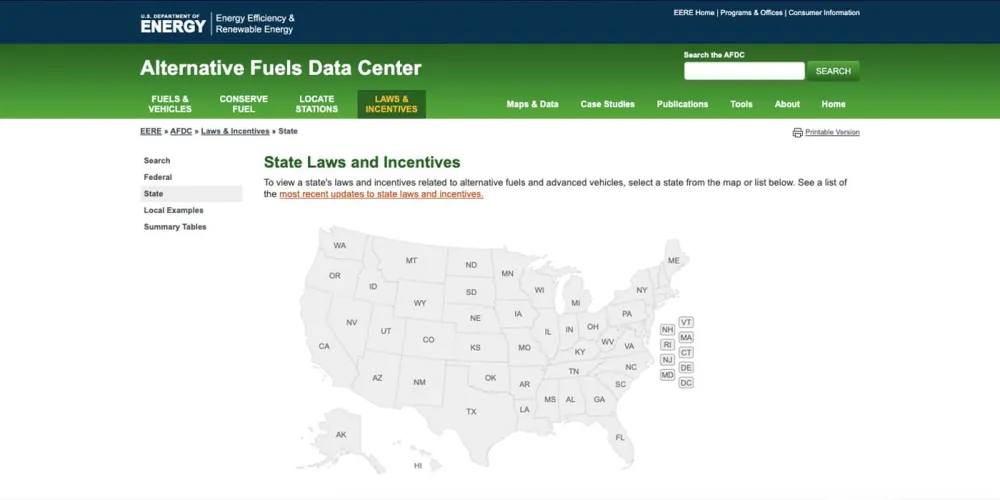
Electric Vehicle (EV) Tax Credit FAQ
How does the EV tax credit work?
At the federal level, the tax credits for EVs (electric cars, vans, trucks, etc) operate as money back at the end of the fiscal year you purchased or leased your vehicles based on a number of factors.
The awarded credit is up to $7,500 per vehicle, but how much you may get back will depend on your annual income, whether you are filing with someone else like a spouse, and what electric vehicle you purchased.
For example, if you purchased a Ford F-150 Lightning and owed $3,500 in income tax this year, then that is the federal tax credit you would receive. If you owed $10,000 in federal income tax, then you could qualify for the full $7,500 credit.
It’s important to note that any unused portion of the $7,500 is not available as a refund nor as a credit for next year’s taxes.
You may also be able to receive money back right away as a point-of-sale credit, but those terms probably won’t kick in until 2024 at the earliest.
What electric vehicles qualify for tax credits?
As things currently stand, there is a lot up in the air right now. The first table above details all of the electric vehicles that qualify under the terms of the Inflation Reduction Act, including battery guidance. Be sure to check the date at the bottom of each table above to see when it was most recently updated.
What electric vehicles qualify for the new tax credits in 2024?
As previously mentioned, qualifying terms for electric vehicles became more strict at the start of 2023, and EVs and their battery components must be assembled in North America to qualify.
As you can see above, significantly fewer electric vehicles qualify under the new terms, but as time goes on, more and more automakers will adapt their production strategies to operate within North America and start selling vehicles that qualify.
American companies like Ford, GM, and Tesla already have EVs that qualify to some extent, but others are sure to follow. We will continually update the list above as we learn more.
Do hybrids qualify for tax credits?
Excellent question. Since traditional hybrid vehicles rely primarily on combustion and do not use a plug to charge, they do not qualify for tax credits at the federal level. Credits apply to plug-in electric vehicles which include plug-in hybrid EVs and battery electric vehicles (BEVs).
Do used electric cars qualify for federal tax credits?
Yes! Under revised terms in the Inflation Reduction Act. Used EVs will now qualify in addition to new vehicles as previously stated.
As of January 1, 2023, qualifying used EVs priced below $25,000 can qualify for up to $4,000 in federal tax credits. There are some terms to note, however:
– Used vehicle qualifies for tax credit only once in its lifetime.
– Purchaser must be an individual (no businesses) to qualify for the used vehicle credit.
– Purchaser may only claim one used vehicle credit per three years.
– Used vehicle must be at least two model years old at the time of sale.
– The original use of the vehicle must have occurred with an individual other than the one claiming the used tax credit.
– Used vehicle must be purchased from a dealer.
– Gross income cap of $75k for individuals, $112,500 for heads of households, and $150k for joint returns.
– Credit may be applied at the time of sale by the dealer
Are there price caps for electric vehicles to qualify for tax credits?
Yes.
Under the new terms in the Inflation Reduction Act, the MSRP of electric vehicles must be $80,000 or less for SUVs, vans, and trucks. MSRPs for all other electric vehicles must be $55,000 or less.
What are the income limits to qualify for any federal EV tax credits?
Modified adjusted gross income limits are $150,000 for individuals, $225,000 for heads of households, and $300,000 for joint returns. Any reported annual income below these thresholds should qualify you for some level of tax credit, as long as your new purchase is a qualifying electric vehicle.
FTC: We use income earning auto affiliate links. More.

